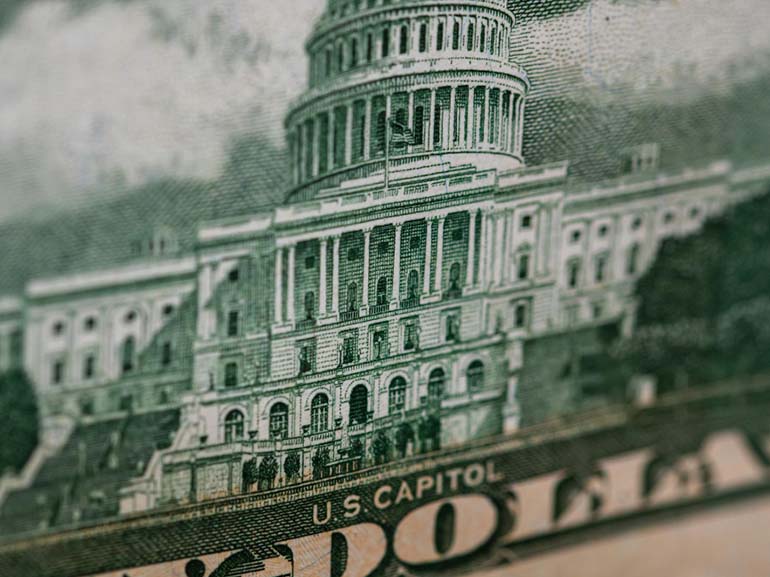Shorting Defined: What Is Short Selling?
The markets are ever-changing and volatile; this volatility and dynamism were prominent in the past couple of months as inflation, fears of a recession, and the war in Ukraine took a toll on economies all over the world. That is to say that markets fall too, and while that decline might overwhelm some traders, it may also be used for their advantage through short-selling.

TL;DR
In times of economic turmoil (inflation, recessions, wars), markets can drop, offering short-sellers opportunities.
Short selling is a strategy in which traders sell assets they don't own, expecting their price to fall, and then buy them back at a lower price.
In Futures trading, shorting involves speculating on an asset’s price dropping through Futures contracts, which allow you to short without owning the asset.
A Short Squeeze occurs when a heavily shorted asset sees a sudden price increase, forcing short-sellers to exit and accelerating the price rise.
In bear markets, short selling can be profitable for traders expecting further declines and if the price moves in a favourable direction.
What Is Short Selling?
Traditionally, short sellers are traders or investors who attempt to potentially benefit from the falling prices of an asset. In this process, short sellers borrow the asset they believe will fall from their broker and sell it in the open market. The purpose of this strategy is to eventually buy back the assets you sold at a lower price than they were sold for and hopefully benefit from the price difference (if your speculations were correct). To sum it up, short selling is when you sell a stock or other securities or commodities you don’t own, hoping to buy them at a lower price. (Source:Charles Schwab)
Short Selling Example: How Does Short Selling Work?
To make short selling more tangible, here’s an example of shorting a stock. If, for instance, a certain company’s share was trading at $100 per share, and the investor believes that its price will decline, then he can borrow 100 shares from his brokerage and short sell them in the open market. If indeed the investor’s speculations were right, he can then buy these shares at a lower price than the one he initially paid. Suppose that the share price fell to $90, the investor who bought the shares earlier can now buy them again at a lower price. Therefore, the investor gets to earn $10 in difference which amounts to $1000 since he borrowed 100 shares.
What Is CFD Short Selling?
In the CFD world, a CFD contract is one where the buyer and the seller stipulate that the buyer must pay the seller the difference between the price of the underlying financial instrument from the inception of the contract until its maturity. When trading CFDs, the traders get to potentially benefit from the rising or declining prices of the underlying assets without owning them (depending on their position). If, for example, the trader opened a buy position, then he is essentially hoping for the price to rise. On the flip side, if the trader opens a short position, then he is speculating on the price of the asset to depreciate.
Unlike traditional short selling, in which you have to borrow the assets from a broker, short selling CFDs with a provider like Plus500 does not require you to borrow or exchange the underlying asset. Short selling CFDs, therefore, helps you avoid an issue called ‘unborrowable stock,’ which is a stock that no lender wants to lend short sellers. In the process of CFD short selling, traders open a “sell” position on their chosen underlying asset. (Source:Investopedia)
For instance, if you open a 1:5 leveraged ‘sell’ position on 100 shares that cost $50 each, you can put a margin of $1000 instead of $5000. In case the price of the share falls to $30, you can eventually close your position and make a profit of $2,000 (excluding commissions). This is how it’s calculated: [($50 - $30 x 100]= $2000. Of course, this profit is only attainable if, indeed, the price of the asset dwindles after you short-sell it. If the price rises, the odds can be against and you may end up losing significant funds.
When Is Short Selling Relevant?
In the bear markets, short selling may be relevant to some traders who aim to potentially benefit from the decreasing prices. Interestingly, some short sellers may prefer to wait for a technical indicator to confirm a bearish trend before they short sell. On the other hand, while many short sellers prefer for a bearish market to be confirmed before they short sell, others find the decline in the price of an individual asset sufficient.
The Pros and Cons of Short Selling
In case the price of the short-sold asset declines (as anticipated), then you can potentially profit from the price without paying high amounts upfront. In addition, short selling allows you to potentially make money during bearish or deteriorating market conditions. On the flip side, if the price of the asset rises instead of falling as you had initially anticipated, then you end up losing a lot of money, especially if the price rises exponentially.
Short Selling Metrics
Though each short-seller has his own approach, there are two possible metrics that can be used to track short-selling activity and reveal the potential stocks/assets for short selling; Short Interest Ratio and Short Interest to Volume Ratio.
Short Interest Ratio (SIR) refers to the number of shares available for short-selling. The higher the SIR ratio the more it indicates to investors that the instrument in question is in a bearish market or is overvalued since it has a short-selling appeal to it. This metric is also called ‘short float,’ as it essentially compares the numbers of floating (available) shares and the currently shorted ones.
The second metric is the Short Interest to Volume Ratio. This metric includes the total amount of shorted shares divided by the average daily trading volume of the stock in question. Like in SIR, the higher the Short Interest to Volume Ratio is, the more bearish the financial asset.
What Is a Short Squeeze?
Sometimes, short squeezes can occur. A short squeeze refers to an unprecedented rise in the prices of a financial instrument which leads to short-sellers exiting their short positions to avoid losses. For a short squeeze to happen the asset has to have a lot of short positions opened on it and for its price to rise dramatically.
It is important to realize that the condition occurs when the short sellers exit the market in order to minimize their losses. Accordingly, by exiting short positions, short sellers accelerate a stock's price rise. A relatively recent example of a short squeeze is Coinbase (COIN) which so far this year has lost about 72% of its value due to an extensive crypto winter, rallied by 90% on Monday, August 4th. This rally amidst the overwhelming downtrend might’ve been a short squeeze according to some analysts.
Whether or not the markets will indeed continue riding the bearish waves is yet to be determined and lies on factors like the war in Ukraine, inflation, and interest rate hikes. In the meantime, though this strategy is controversial and risky, many traders seem to be adopting it, perhaps attempting to turn the bear market’s lemons into lemonade.
Conclusion
Short selling can be an effective strategy for profiting from market declines, especially during volatile economic periods, such as inflation or recessions. By borrowing and selling assets at a high price and then buying them back at a lower price, traders can benefit from price decreases. However, the strategy comes with significant risks, including the possibility of losing more than the initial investment if prices rise unexpectedly. Metrics like Short Interest Ratio and Short Interest to Volume Ratio help traders identify potential assets for short selling. It's also crucial to be aware of the possibility of a short squeeze, where rising prices force short sellers to exit, leading to further price increases.
FAQs
What is short selling?
Short selling is when you sell an asset you don’t own, hoping to buy it back at a lower price to make a profit.
How does short selling work?
You borrow an asset, sell it at the current price, and buy it back later at a lower price to pocket the difference.
When is short selling relevant?
Short selling becomes relevant during bear markets or when asset prices are expected to fall.
What is a short squeeze?
A short squeeze occurs when the price of an asset rises unexpectedly, forcing short sellers to buy back the asset at a higher price, which further drives the price up.
What are the risks of short selling?
The main risk of short selling is that prices can rise unexpectedly, leading to potentially unlimited losses.






